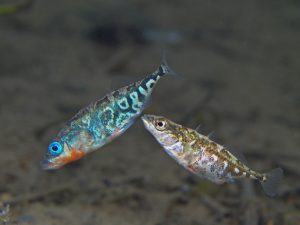The molecular genetic mechanisms of life history evolution in sticklebacks
Asano Ishikawa and Jun Kitano
Ecological Genetics Laboratory, Center for Frontier Research, National Institute of Genetics, Japan
The timing of reproduction is one of the important life history traits that influence fitness. Some organisms use photoperiods to reproduce during favorable seasons, but others lose such photoperiodism. Compared to the theoretical studies, we know little about the molecular genetic mechanisms underlying variations in the timing of reproduction. To answer these questions, we use the threespine stickleback fish as a model. Ancestral marine ecotypes generally show seasonal reproduction, whereas derived freshwater ecotypes exhibit great diversity in both the timing and duration of reproduction. Our common garden experiments showed that testis development is stimulated by a shift to a long photoperiod in marine ecotypes, but is independent of photoperiod length in freshwater ecotypes. Transcriptome analysis showed that thyroid stimulating hormone beta 2 (TSHβ2) exhibits photoperiodic change in marine ecotypes, but not in multiple freshwater populations. TALEN-induced knockdown experiments demonstrated that TSHβ2 has a pleiotropic role in suppressing gonadotropic hormone expression, sex steroid hormone secretion, gonad development and body growth under short days, which may underlie their long and early reproduction. Linkage mapping and allele-specific expression analysis of multiple populations revealed that the parallel loss of TSHβ2 response occurred via different mechanisms; cis-regulatory mutations in Canada and trans-regulatory mutations in Japan. Single-cell RNAseq and reporter assays are underway to further investigate the molecular mechanisms.










You must be logged in to post a comment.